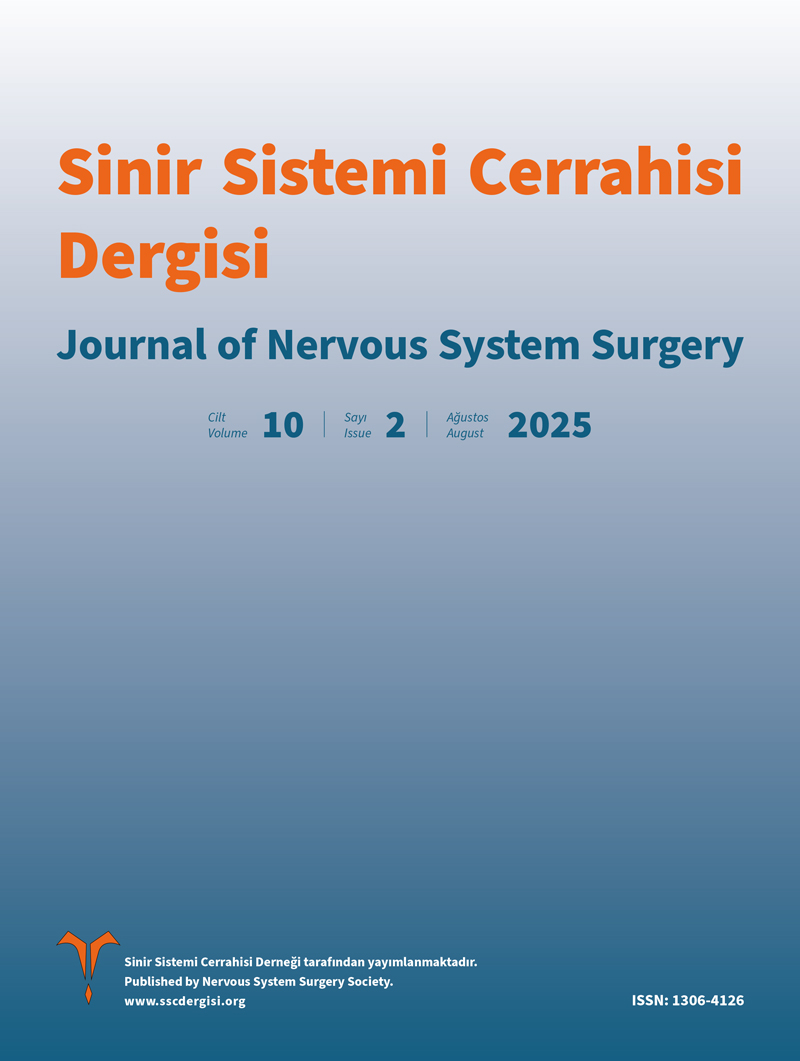Abstract
Objective: Endoscopic transsphenoidal surgery is the most frequently preferred surgical approach for skull base pathologies. Approximately 95% of patients undergo transsphenoidal techniques. Despite surgical resection, recurrence may occur. In the literature, there are only a limited number of publications on this topic, primarily in the form of case reports and systematic reviews. The aim of our study is to present the recurrence outcomes of nonfunctioning pituitary neuroendocrine tumor (PitNET) cases operated in our center using the endoscopic transsphenoidal approach.
Materials and Methods: Between January 2017 and February 2025, demographic, pathological, and radiological data, as well as surgical videos of patients with recurrent nonfunctioning PitNETs who underwent endoscopic transsphenoidal surgery at a single tertiary center, were retrospectively reviewed.
Results: The study included 115 patients, of whom 39 were female and 76 were male. Twenty-one patients underwent surgery three times, five patients underwent surgery four times, three patients underwent surgery five times, and two patients underwent surgery six times due to recurrent nonfunctioning PitNET.
Conclusion: Recurrence may occur following endoscopic transsphenoidal surgery. In recurrent nonfunctioning cases, patient age, sex, tumor size, and pathological indices affect the recurrence rate. The first surgery plays a critical role in pituitary neuroendocrine tumors. Initial operations performed by experienced surgeons are of paramount importance in reducing the risk of recurrence.
Keywords: pituitary adenoma, recurrent, macroadenoma, non-functional, cavernous sinus, Ki-67
References
- Machado LF, Elias PCL, Moreira AC, Dos Santos AC, Murta Junior LO. MRI radiomics for the prediction of recurrence in patients with clinically non-functioning pituitary macroadenomas. Comput Biol Med 2020; 124: 103966. https://doi.org/10.1016/j.compbiomed.2020.103966
- McClure JJ, Chatrath A, Robison TR, Jane JA. Conditioned recurrence-free survival following gross-total resection of nonfunctioning pituitary adenoma: a single-surgeon, single-center retrospective study. J Neurosurg 2023; 140: 1614-1619. https://doi.org/10.3171/2023.10.JNS23754
- Lee MH, Lee JH, Seol HJ, et al. Clinical Concerns about Recurrence of Non-Functioning Pituitary Adenoma. Brain Tumor Res Treat 2016; 4: 1-7. https://doi.org/10.14791/btrt.2016.4.1.1
- Lu L, Wan X, Xu Y, Chen J, Shu K, Lei T. Prognostic Factors for Recurrence in Pituitary Adenomas: Recent Progress and Future Directions. Diagnostics (Basel) 2022; 12: 977. https://doi.org/10.3390/diagnostics12040977
- Zhong J, Chen Y, Wang M, et al. Risk factor analysis and prediction model to establish recurrence or progression of non-functioning pituitary adenomas in men after transnasal sphenoidal surgery. Sci Rep 2024; 14: 21607. https://doi.org/10.1038/s41598-024-72944-5
- Ko CC, Chang CH, Chen TY, et al. Solid tumor size for prediction of recurrence in large and giant non-functioning pituitary adenomas. Neurosurg Rev 2022; 45: 1401-1411. https://doi.org/10.1007/s10143-021-01662-7
- Chen W, Wang M, Duan C, et al. Prediction of the Recurrence of Non-Functioning Pituitary Adenomas Using Preoperative Supra-Intra Sellar Volume and Tumor-Carotid Distance. Front Endocrinol (Lausanne) 2021; 12: 748997. https://doi.org/10.3389/fendo.2021.748997
- Dallapiazza RF, Grober Y, Starke RM, Laws ER, Jane JA. Long-term results of endonasal endoscopic transsphenoidal resection of nonfunctioning pituitary macroadenomas. Neurosurgery 2015; 76: 42-52; discussion 52-3. https://doi.org/10.1227/NEU.0000000000000563
- Gong X, Zhuo Y, Yuan H, et al. Outcome of Endoscopic Transsphenoidal Surgery for Recurrent or Residual Pituitary Adenomas and Comparison to Non-Recurrent or Residual Cohort by Propensity Score Analysis. Front Endocrinol (Lausanne) 2022; 13: 837025. https://doi.org/10.3389/fendo.2022.837025
- Yang F, Bi Y, Zhou Q, et al. Pituitary adenoma with cavernous sinus compartment penetration and intracranial extension: surgical anatomy, approach, and outcomes. Front Oncol 2023; 13: 1169224. https://doi.org/10.3389/fonc.2023.1169224
Copyright and license
Copyright © 2025 The Author(s). This is an open access article distributed under the Creative Commons Attribution License (CC BY), which permits unrestricted use, distribution, and reproduction in any medium or format, provided the original work is properly cited.






